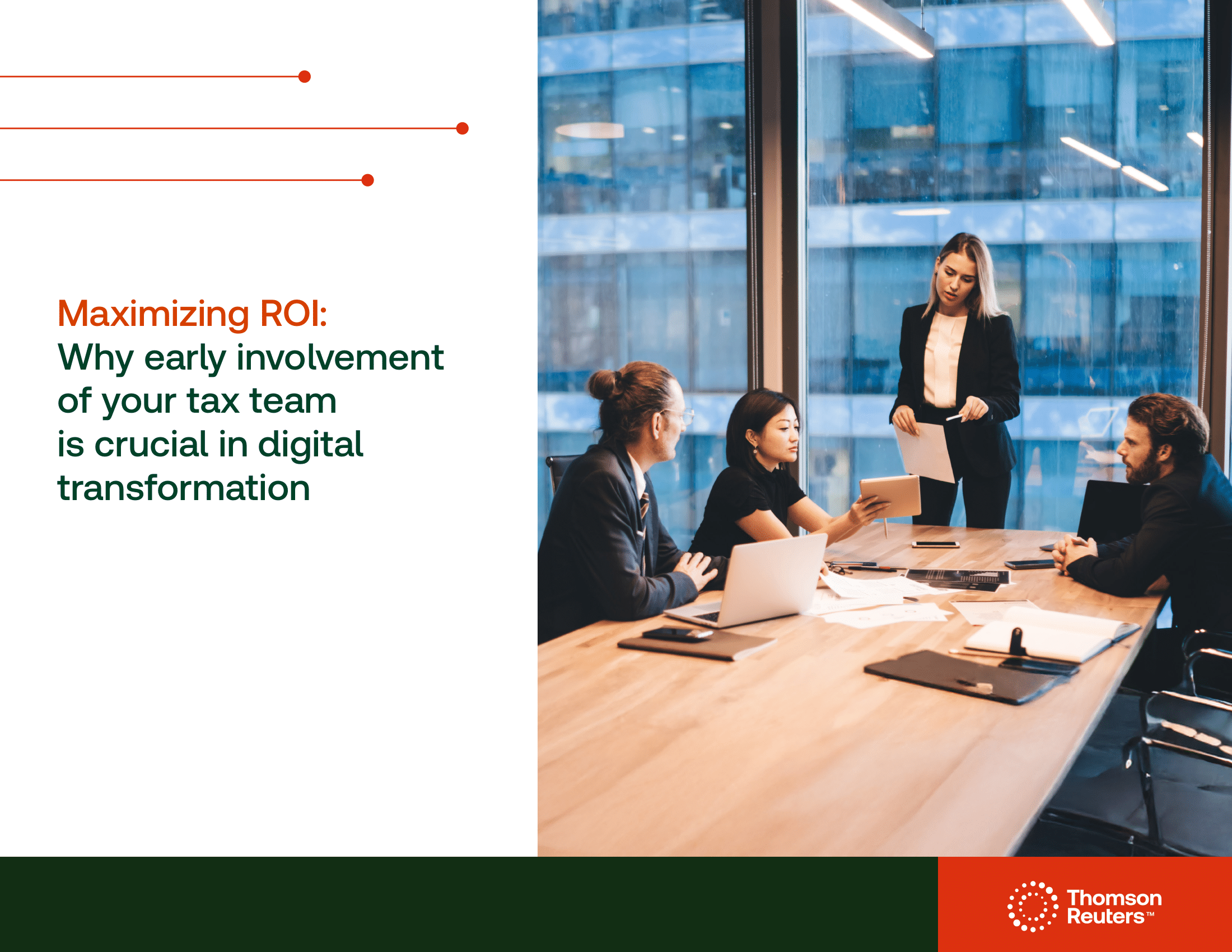How to estimate costs, prioritize total cost of ownership (TCO), evaluate ROI, and more.
As organizations increasingly rely on data-driven decision making, more chief financial officers (CFOs) are actively implementing enterprise resource planning (ERP) solutions. This shift facilitates smooth connectivity across various departments, boosts operational visibility, and strengthens financial reporting.
Budgeting for an ERP implementation is key to the project’s success and delivers measurable return of investment (ROI) for your organization. Let’s walk through the essential steps to create a well-planned ERP budget that aligns with your business objectives.
Jump to ↓
Align your ERP budget with business objectives
Estimate ERP implementation costs and resources
Prioritize ERP training and support
Evaluate the ROI of an ERP implementation
1. Align your ERP budget with business objectives
To budget effectively, make sure your ERP system supports the company’s strategic direction, preserving the core processes that drive value while minimizing disruptive changes. Forcing unnecessary process changes can increase both implementation and operational costs.
Consider using an ERP implementation checklist to establish measurable goals, like reducing order processing times by 20% or increasing inventory accuracy by 15%. This provides a clear direction for evaluating the success of your ERP implementation and realizing tangible benefits.
2. Estimate ERP implementation costs and resources
Budgeting for an ERP system requires a comprehensive assessment of both direct and indirect costs, including:
Software costs
The initial purchase price of an ERP system varies widely depending on the vendor, functionality, and size of the organization. Cloud-based ERP solutions typically follow a subscription pricing model, while on-premises systems often involve a larger upfront investment. Additionally, some ERP platforms offer modular pricing, where you only pay for the features you need to get started and scale up later, reducing unnecessary upfront costs.
License fees
For on-premises ERP solutions, licensing fees can be a major part of the total cost. These fees usually depend on the number of users and the type of licenses required, like ‘concurrent’ versus ‘named’ users. Carefully analyze your needs to choose the best licensing structure to avoid over-licensing, which wastes resources, or under-licensing, which can disrupt operations. Also, consider any add-on modules or third-party integrations that might require extra licenses.
Subscription fees
Cloud-based ERP solutions often operate on a subscription-based pricing model, where costs are spread out over time. Subscription fees typically cover software updates, security patches, and customer support, reducing the burden of maintaining the system in-house. However, be mindful of potential price increases after the initial contract term. It’s advisable to negotiate long-term pricing agreements to maintain cost predictability and avoid unexpected increases that could strain the budget.
Ongoing maintenance costs
Ongoing maintenance costs can include software updates, system monitoring, security patches, and performance optimization. For on-premises ERP systems, these costs often fall on the organization’s IT team, requiring dedicated resources to manage and maintain the system. Cloud-based ERP solutions typically bundle these costs into the subscription fees, but organizations should still budget for system enhancements, user support, and any necessary customizations. This keeps the ERP system aligned with evolving business needs.
To mitigate these risks, conduct a thorough cost analysis and actively engage with vendors. It’s also essential to factor in personnel time, external consultants, and potential productivity dips during the transition period. Cost overruns are common when organizations underestimate project complexity or overlook hidden costs. Creating a realistic budget from the start ensures the ERP project stays on track and avoids unexpected financial strain.
|
|
3. Avoid costly surprises
Investing in a new ERP system is a major commitment that goes beyond just purchasing software. It involves dedicating time and resources to process reengineering, implementation consulting, cloud services, and hardware upgrades. Without careful oversight, these costs can quickly add up, impacting both the budget and the overall success of the project.
CFOs must take a strategic approach to managing ERP implementation costs to prevent unexpected expenses and maximize ROI.
Prioritize total cost of ownership (TCO)
Focusing solely on starting costs can be misleading. ERP implementations have long-term financial implications that extend beyond initial deployment. To avoid hidden expenses, evaluate the total cost of ownership (TCO), which includes licensing, ongoing maintenance, system upgrades, and support. CFOs can manage expenses effectively while maximizing the long-term value of their ERP investment by tracking both direct and indirect costs over time.
Focus on high-value business processes
To get the most out of an ERP system, prioritize automating and optimizing the routine processes that generate the most value for the company. Processes such as managing customer orders, updating pricing, adding new products, modifying manufacturing details, and onboarding employees should be streamlined and improved. Efficiently operating these core functions reduces costs and heightens overall business performance.
Minimize customizations and leverage built-in capabilities
Customizing an ERP system to match every internal preference can be tempting, but excessive modifications can lead to higher implementation costs, longer deployment timelines, and maintenance complications. Instead, take advantage of the system’s configurable features, such as dashboards, workflows, business intelligence, and mobile capabilities. Using these built-in tools reduces the need for custom coding while empowering users to make quick, cost-effective adjustments.
Protect against security risks
Data breaches and system hacks can lead to significant financial and reputational damage. To avoid these risks, adopt a secure cloud-based ERP solution that offers strong encryption, multi-factor authentication, and continuous monitoring. A secure ERP system not only safeguards sensitive information, but it also prevents costly breaches that could disrupt business operations.
By focusing on these key areas, CFOs can ensure that the ERP implementation remains on budget, delivers measurable value, and supports the company’s long-term growth objectives.
4. Prioritize ERP training and support
ERP implementations often fail due to inadequate user adoption and lack of proper training. That’s why it’s important to allocate a significant portion of the ERP budget to training and ongoing support to make sure employees are equipped to use the new system effectively. Without comprehensive training, staff may resist change or misuse the system, undermining the intended benefits.
Implementing a structured change management plan that communicates the benefits of the new ERP system can proactively address employee concerns. Engaging department heads and end-users allows for a system that is configured to meet their operational needs. Regular communication, feedback loops, and recognition of early adopters can further encourage a positive mindset toward the change.
5. Evaluate the ROI of an ERP implementation
After your ERP system starts operating, you inevitably ask, “Did this investment deliver the expected results?” To assess the ROI of an ERP implementation, go beyond financial figures and thoroughly evaluate both tangible and intangible benefits in relation to the total cost of ownership.
To accurately gauge success, organizations should identify and monitor key performance indicators (KPIs) that align with their strategic goals. These might include operational efficiencies, reduced inventory costs, increased sales, and improved decision-making. By tracking these metrics before and after implementation, CFOs can clearly see where the ERP system is driving measurable value.
While some benefits of ERP implementation, such as improved data accuracy, stronger regulatory compliance, and enhanced customer satisfaction, can be hard to quantify, they undeniably impact overall business success. These intangible advantages often drive long-term growth by enabling faster decision-making, reducing compliance risks, and fostering stronger client relationships.
Consider incorporating these factors into a balanced scorecard for a more holistic view of your ERP solution’s ROI. This approach captures both immediate financial returns and strategic gains that position your organization for long-term success.
Ready to learn more?
Take advantage of the combined expertise of Thomson Reuters with SAP to ensure a smooth ERP implementation.

E-book
Learn to advocate for tax team early involvement during your organization's digital transformation journey
Access e-book ↗











